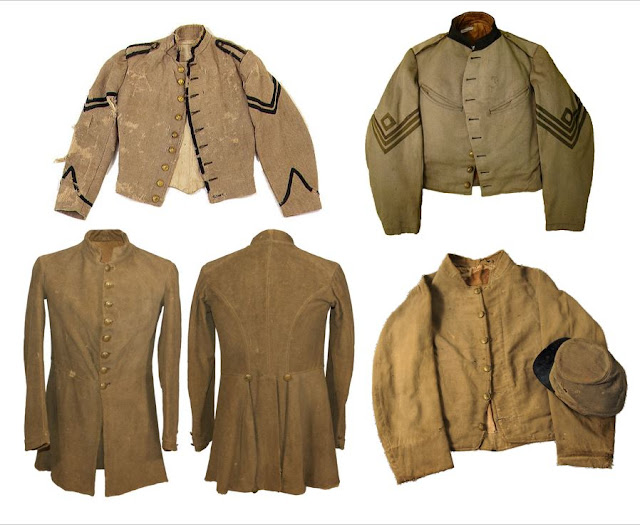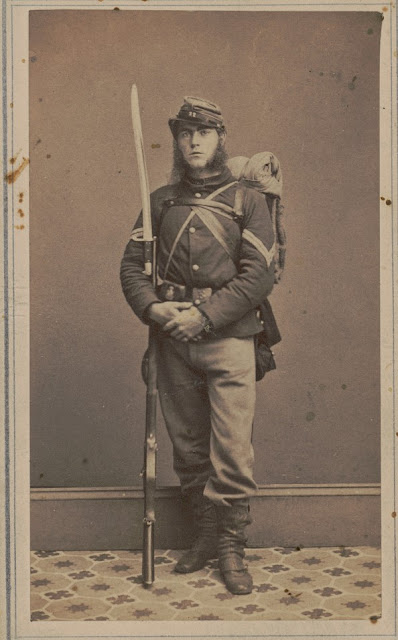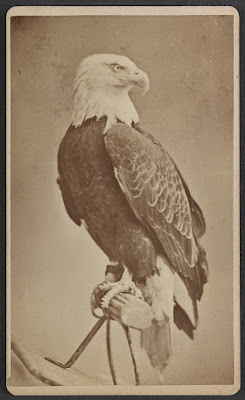Charles Barney Dennis at Stones River Part III: Collapse of the Right Wing December 31, 1862
Our position went against us immediately
after the battle opened up the next day or early morning. We had had such
breakfast as we could get at 5 o’clock and then lay there watching the heavy
lines of infantry that the Rebels were pushing around to our extreme right. We
could see the battle flags plainly but were not allowed to fire at them. About
half past five a line of skirmishers was pushed forward by the Rebels and it
promptly commenced picking on us. It was followed, as we found just a little
later, by two heavy lines of battle, just twice our strength. Their front was
covered by a fringe of small bushes and little cedar trees, while we had been
drawn back a little into an open strip that ran along between the lines. [Co. E
was on skirmish duty in front of the 101st Ohio when the Rebel
attack began and attempted to contest the advance. Lewis Day recalled that ‘the
tacit armistice between our pickets and the Rebels in our immediate front was
dissolved by the first rays of the morning. Each man took to his tree or his
log and warily looked out for both himself and his antagonist. The early and
vigorous advance of the Rebel line made it necessary to recall our picket line-
indeed, we were unceremoniously driven in, a number of our boys being badly
wounded before we reached our place in the line of battle.’ First Lieutenant
Lyman Parcher reported that ‘the enemy steadily advanced his skirmishers
causing sad havoc in our ranks.’]
When these rebel skirmishers began
shooting, we were ordered into line, standing like a wall of human beings for
them to pick off. Still the order to came to us, ‘hold your fire, men! Give way
to the right, give way to the left, steady, steady.’ All this time we heard the
thud of bullets as they found their way into some poor fellow’s flesh and the
falling men all along the line were easily seen as they pitched forward on
their faces, many of them never to rise again. Finally, their skirmishers came
out of the bushes a little, keeping up a steady fusillade but it was then that
we could see what was behind that skirmish line. [The Rebels pushed forward
their sharpshooters and Colonel Stem called for volunteers to combat them.
‘Several rose, one of whom was shot and instantly killed and a number of others
were more or less seriously wounded,’ recalled Lewis Day.]
Soon after we received the order to fire.
At first we were ordered to deliver volley firing, then came the order ‘fire at
will and fire low, aim at their knees!’ We could see their knees as they came
on and we did aim at them, although I think the first shot I fired went very
nearly straight up in the air, and if my recollection serves me, it must have
taken a sort of curve up and over the Rebel line and fallen on the other side.
I hope to this day that it had some effect on some Johnny.
Owing to the fact that the Rebels
outnumbered us nearly two to one, at least on the right wing of our army, we
were compelled to fall back slowly, changing our front slightly and facing more
to the east as we were now in the crook of the elbow so to speak of the Rebel
force. They were attempting an enveloping movement which, if successful, would
put our whole army in a very dangerous position. But by the prompt action of
some of the division commanders, especially General [Philip] Sheridan and
[Jefferson] Davis, they were prevented, although they continued to drive our force
back. [Major Isaac M. Kirby reported that it was the flanking fire that drove
the 101st from their position with heavy losses, including both
regimental leaders. ‘It was at this time that Colonel Leander Stem and
Lieutenant Colonel Moses F. Wooster fell mortally wounded while gallantly and
nobly attempting to hold the regiment in line. Colonel Stem fell just as he
called out ‘Stand by your colors boys, for the honor of the good old State of
Ohio!’ The regiment fell back in some disorder.’ George Meyers recalled that
Stem had urged the men to ‘wait until you see the whites of their eyes then
give them the buckeye!’ Attempts were made to carry both wounded men back to
the Gresham House hospital during the battle but the heavy assault of the
Confederates made this impossible. Wooster told the men ‘Put me down boys and
rally to the support of the flag.’ A wounded man stayed with him until he died
the following day at Gresham House. Colonel Stem ended up in Murfreesboro where
he died on January 5th.]
Speaking of my personal movements, a
Sandusky boy named Philip Kunz and I had gotten back to the rail fence that
marked the border of the cotton field and had taken position behind a barricade
of rails as they had been thrown down to let our artillery pass out of the
cedar thicket easier, and we were (we thought) doing very good service there
firing deliberately at some individual mark. Our nervousness had all
disappeared and in its place a sort of grim determination to stop the oncoming
cloud of butternut Rebels. An officer came rustling by pretty soon and ordered
us to leave the rail fence and fall back on the colors which we could see at
the top of the ridge in the cotton field. Kunz made a quick survey of the
situation and said to me, ‘I’m going to the left of our colors, to the line
occupied by the 38th Illinois.’ This part of the line was not under
as heavy a fire as that of our regiment and the one on its right. [The 101st
Ohio’s color bearer Sergeant James M. Roberts of Co. C gained favorable mention
in Major Kirby’s report for his steadfastness under fire. ‘He never faltered,
always planted the colors promptly where directed, and never moved them till
ordered.’]
We were feeling the effects of a heavy
fire of musketry on our front, and also enfilading fire of both musketry and
artillery from the enemy who had gained a position on our right. I did not
follow Kunz, for what reason I cannot now explain, don’t know that I ever could
explain. It would have been perfectly right and really the proper thing to do,
but I saw our colors and saw the frantic gesticulations of the officers in
front of them and had also been ordered to form on the colors.
So like the greenhorn that I was, I
started straight for the man in front of our flags and it proved to be John B.
Biddle, lieutenant of the color company. [Co. C] Just before I reached him (I
was ten feet away and in front of him) I saw him throw up his arms. His sword
which he had been flourishing fell at his side for it was attached to his wrist
by a strap and then fell flat on his face without even a groan. He had been
shot straight through the center and was dead when he reached the ground. I
went to him but just before bending over to examine him, I felt a tinge or
sting or something that resembled it. The sensation seemed to be in my hip. I
started to go to the regiment, but I discovered that it had fallen back a
considerable distance. By this time my hip had taken on a new sensation,
something like paralysis. I surely did want to get to that old regiment, or any
of them, but after making two or three attempts I had to sit down or more
correctly to fall down. The Rebel lines were fast closing in on us and were
already between me and the fence that Kunz and I had been behind. They were
firing as they came and giving the famous Rebel yell which in itself will
hypnotize a human or animal. It is not a cheer, such as our men gave when on a
charge, or to emphasize any success, but a shrill, ugly sort of snarl that
carried a great distance. [Lewis Day wrote that ‘the Confederates were squarely
on our flank and were protected by the fence along the Griscom road (Gresham
Lane) behind which they were sheltering themselves and from between the rails
of which they were deliberately murdering us.’]
Near me lay a little artilleryman who had
been shot through the groin. He seemed to be suffering considerable pain but
said it was more like a toothache than anything he could think of. He asked me
to feel the back of his hip. I did and there was a lump as large as a large
hickory nut. While we were discussing the situation, a Rebel officer came along
and the little artilleryman called out to him and asked if he was a surgeon.
The man said he was and asked what was wanted. The little Yank replied that he
wanted this ball cut out of his hide. The doctor came over laughing and asked
where the wound was, and being told, turned the wounded man over on his
stomach, bared the wound, took his lancet and cut across the lump I had felt,
then took a pair of tweezers and pulled an ounce of lead out of the wound. The
ball had passed through the man’s body, entered the groin, and came out near
the back of his hip. The Rebel surgeon made as if to put the ball in his
pocket, but the little Yankee grabbed it from him and said, ‘That’s mine, doc.’
Then he looked at the doctor closely and
asked ‘what’s yer name? Is it Dr. Smith?’ I can’t recollect the name he gave,
but the doctor said that was his name and asked where the young fellow had ever
seen him or how he knew his name. The young Yankee said he had been in a New
Orleans hospital before the war for some slight injury he had received and that
this doctor had attended him. The doctor admitted being a New Orleans man, but
could not place the young fellow.











Comments
Post a Comment